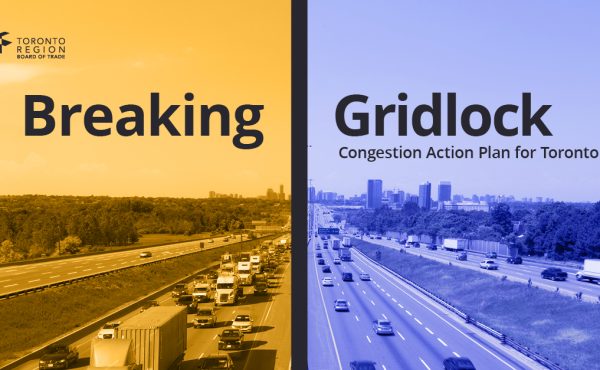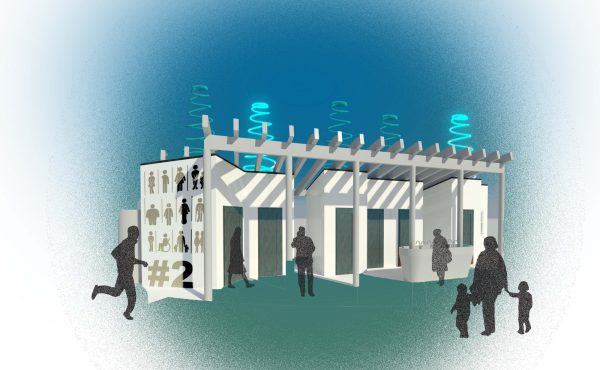
Today’s Globe and Mail has an article about video billboards and the effect they have on drivers. From Dr. Gridlock’s column today:
…City transportation officials plan to ask council for cash to help fund future studies of the dangers of video billboards, perhaps in co-operation with other cities.
Toronto already asks the operators of video billboards along the expressways under its control to voluntarily tone down their brightness in response to complaints from motorists and from people who live nearby. But the number of these signs is clearly growing on Toronto streets and along its expressways, even though the province has simply banned them along its highways.
And there seems to be little question that driving while distracted, whatever the cause, is a major factor in accidents. The Canadian Automobile Association recently launched a safety campaign warning drivers to keep their eyes on the road, instead of on stereo controls, iPod display screens, text messages, cellphone conversations and the rest.

If there’s one thing that members of the Billboard Battalion have learned, it’s that good, old-fashioned letter-writing can make a difference. Since the Billboard Battalion — a campaign of the Toronto Public Space Committee that’s attracted over 100 members — sprang to aCI-Billboards2-0629ction a year ago, the group has grown to play a large role in the decisions made about billboards at city hall. While some go to meetings to state their opposition to specific proposed billboards at community councils once a month, most in the Battalion take action from the comfort of their own home.
“I’ve learned that a two-line email can work,” says fellow BBer Stewart Russell, a wind-farm developer from Scarborough who describes himself as “your average armchair inactivist.”
Councillors have taken note. “We don’t have a notification process or a circulation process [for billboard applications], and so the Public Space Committee is taking it upon itself to review all these applications,” explains councillor Joe Mihevc. “Funny enough, the ones that they oppose, certainly in the downtown area — about 90 per cent of them get rejected.”
And while we’re talking about advertising on our streets, Christopher Hume ruminates on the street furniture harmonization contract.
What we’re talking about here is bus shelters, benches, bike racks, newspaper boxes, trash bins and so on, the stuff that makes up so much of the urban fabric. It’s one step down from architecture, but still all about design — and the city.
For Toronto, it provides an opportunity to return the sidewalks to pedestrians. Though this is a car city of the most flagrant kind, even drivers must sometimes use their legs for something other than pushing pedals.Though little can be done about widening Toronto’s too narrow sidewalks, we can get rid of the clutter that threatens to make them impassable. The most recent example was the battle over the giant garbage bins that come with billboards attached. These were initially approved by the city’s public works committee, which didn’t have a clue that maybe these contraptions were inappropriate and offensive….
The objective shouldn’t be to beautify the city so much as to provide order and accessibility. In the best-case scenario, it becomes almost invisible, part of the landscape but not obtrusive.




5 comments
Council’s push to `harmonize’ the city’s street furniture is yet another civic solution in search of a problem. It represents one more project we can add to other Miller-era clean sweep blunders, such as the push for newspaper megaboxes, sanitized hydro poles and high-tech garbage cans. I have yet to meet a resident of the city or a tourist who walks down the street wondering why bus shelter A doesn’t match street bench B. Genuinely urban streetscapes are, by definition, intensely varied visual environments, and that’s what makes them great. This Bureaucratic effort to create aesthetic harmony in the name of design should be seen for what it really is: a money making venture on the part of the outdoor advertisers who remain the only real constituency for such a scheme. If the city wasn’t peddling ad space on street furniture — a suspect term all by itself — does anyone really believe council would waste our time and money with all this pointless exterior decorating? Of course not, so let’s stop pretending otherwise.
That was fantastic, John. I’m the person in charge of this for the Toronto Public Space Commitee. We’re going back to depute at the Works Committee this Wednesday, and I would love to have you join us or at least get your permission for me to read out what you’ve written above. Please send me an email at jonathan@publicspace.ca
My guess is the harmonization process is an attempt at cost savings through economies of scale. Or so goes their rationale. In any case, I am not really a fan of this, especially if advertising is part of it. Further to Mr. Lorinc’s comments about varied environments, I think it would be a great idea if the City got the BIAs to take a lead role on this. Ideally, BIAs in conjunction with local residents groups, could do the legwork of selecting appropriate street furniture for their neighbourhood. This would give us furniture sensitive to local context, that would further strengthen the identity of a neighbourhood, while creating a more varied and interesting urban environment.
Oh, and to respond to your point about why the City is doing this: The bus shelter contract with Viacom runs out late next year, and the garbage bin contract with Eucan (formerly OMG) runs out in 2009. Councillors feel good about themselves when they can find “alternative funding models” rather than having to answer to their constituents about property tax increases. There’s no question this is a cash grab; it’s a “Coordinated Street Furniture Program” simply because the councillors believe what advertisers have been telling them, that they can get more money by giving a contract for everything to a single company.
And how does the Mayor feel about the privatization of public infrastructure? Well, apparently it doesn’t count as privatization if you’re either a) perpetuating privatization that has already occurred (i.e. the shelters and garbage bins are already private and thus awarding a new contract to an ad company for new shelters and new bins isn’t privatization) or b) giving a contract to a private company to provide a piece of infrastructure that the City does not yet provide itself (e.g. information pillars or other such obtrusive and unnecessary additions to the streetscape). Well, that’s essentially what he told me when I asked him, anyway.
I also asked him whether he actually thinks people would be upset if their tax money were put towards the City purchasing and maintaining such items; he responded that he thinks they’d be fine with it but wouldn’t respond well to the 8% tax hike it would necessitate. Eight percent?! I am extremely doubtful of the accuracy of that figure, especially because THE CITY HASN’T CALCULATED HOW MUCH IT WOULD COST THEM TO FUND IT PUBLICLY. At best, they’ve used Viacom’s numbers… and even then it would only work out to something like 59¢ per taxpayer per week.
It’s really great to see that a respected urban writer such as yourself, John, feels the same way about the Street Furniture Program as we at the TPSC do. To be quite honest, I was rather disappointed by Christopher Hume’s article in the Star today.
Public space activist, Dave Meslin, sent this letter to Christopher Hume today in response to his column on street furniture. I’m posting it here with his permission….
[Hume wrote:]
“But even if Toronto has to settle for less, the right deal would mean less advertising on city streets and better quality furniture. Who could argue with that?”
[Dave writes:]
I’d like to volunteer to be a person who could argue with that. While I truly admire your optimism and hope that you prove me wrong, there is no doubt in my mind that the Coordinated Street Furniture program is a mistake for Toronto and I predict that people will look back and see it as yet another blunder along with the Silver Boxes, Info Pillars and MegaBins, all of which were championed by Council as a beautiful and practical enhancement for the streets. In fact, the MegaBins were
promoted as “less advertising” and “better quality”. Sounds familiar…
“Less ads”? Less than what? Not less than we had six years ago before Mel Lastman’s Council allowed OMG to put Silver Boxes on every corner. “Less Ads” is a phrase coming out of Toronto’s ad industry and being swallowed by both Council and the media. It’s simply not true. For a variety of reasons. The main reason is that ads are not measured in square feet. They are measured by impact. Impact includes factors such as illumination, height, placement, etc. Any deal struck under the Coordinated Street Furniture plan will have much more outdoor advertising on our streets than the we had with the pre-OMG situation and probably even more than we have now.
The “right deal” would be no “deal” at all. It would be a purchase. Street Furniture is not as expensive as the City would have you think. All of the numbers they are using right now ($20,000 for a bus shelter) are numbers that were given to them by Viacom, Astral and Eucan. The city has done zero costing and sourcing of their own. Zero. Ask them.
This whole street furniture program is being driven and pushed by the ad industry, for a simple reason. The City has a sign bylaw that prevents billboards from going up on every corner. The Street Furniture program is simply a legal bribery scheme that allows the outdoor advertising industry to pay the city millions of dollars to circumvent the entire sign bylaw and place illuminated ads for everything from beer to botox on thousands of street corners, including those in residential areas, near schools, churches, parks etc…
The aesthetic argument for a “coordinated look” is moot. Things were already coordinated. Look at how Astral’s info pillar looked exactly like the Viacom shelters. And why are we going to rip out hundreds and hundreds of Viacom shelters that are still brand new?
We simply don’t need a Coordinated Street Furniture program. We don’t need new shelters. We don’t need more “Info pillars”. What Toronto needs right now, is a few thousand functioning recycling bins that actually work. The capital cost of the project, spread out over ten or fifteen years would be literally pennies per taxpayer. Just like in the old days, when city governments paid for garbage cans and asked everyone to chip in fifty cents a year to pay for it.
This project is not being driven by need nor by logic. I hope you’ll take a deeper look at the numbers and, more importantly, the alternatives.
thanks,
~ dave
(writing simply as a concerned citizen)